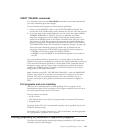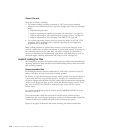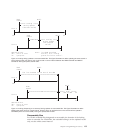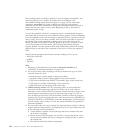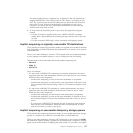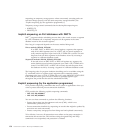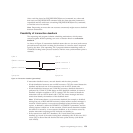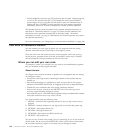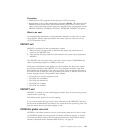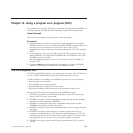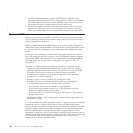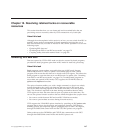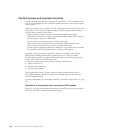Procedure
v Enable them in PLT programs in the first part of PLT processing.
v Specify them on the system initialization parameter, TBEXITS. This takes the form
TBEXITS=(name1,name2,name3,name4,name5,name6), where name1, name2, name3,
name4, name5, and name6 are the names of your global user exit programs for the
XRCINIT, XRCINPT, XFCBFAIL, XFCLDEL, XFCBOVER, XFCBOUT exit points.
What to do next
For programming information on the generalized interface for exits, how to write
exit programs, and the input parameters and return codes for each exit, see the
CICS Customization Guide.
XRCINIT exit
XRCINIT is invoked at warm and emergency restart:
1. When the first user log record is read from the system log, and before it is
passed to the XRCINPT exit
2. After the last user log record has been read from the system log and passed to
XRCINPT
The XRCINIT exit code must always end with a return code of UERCNORM. No
choice of processing options is available to this exit.
CICS passes information in the global user exit parameter list about user-written
log records presented at the XRCINPT exit. The parameters includes a flag byte
that indicates the disposition of the user log records. This can indicate the state of
the unit of work in which the user log records were found, or that the record is an
activity keypoint record. The possible values indicate:
v The record is an activity keypoint record
v The UOW was committed
v The UOW was backed out
v The UOW was in-flight
v The UOW was indoubt
XRCINPT exit
XRCINPT is invoked at warm and emergency restart, once for each user log record
read from the system log.
The default action at this exit is to do nothing.
If you want to ignore the log record, return with return code UERCBYP. This frees
the record area immediately and reads a new record from the system log. Take care
that this action does not put data integrity at risk.
XFCBFAIL global user exit
XFCBFAIL is invoked whenever an error occurs during backout of a unit of work.
An XFCBFAIL global user exit program can decide whether to bypass, or invoke,
CICS backout failure control, The processing performed by CICS backout failure
control is described under “Backout-failed recovery” on page 79.
Chapter 13. Programming for recovery 161



